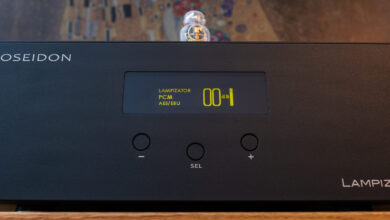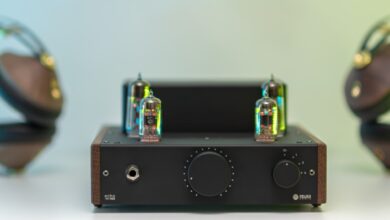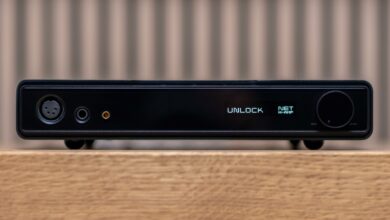Interview with Jim White, designer, engineer, and head of Aesthetix
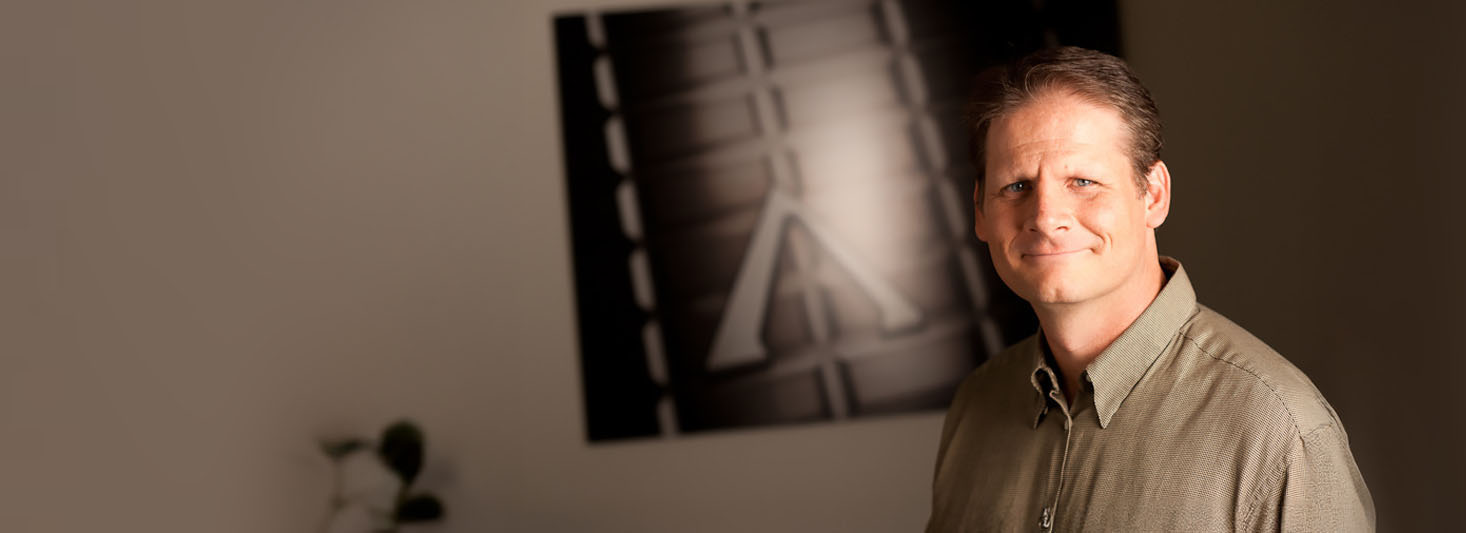
The People
If someone asks me what to make of this hobby and passion after these years of learning and discovery, years of shows and writing about all of it, years of factory tours, product testing, and many hours of critical listening, I would say just — People. The People I’ve met along the way are the most significant value of all these experiences. From my colleagues and friends here at Sound News to the fantastic designers of the hifi world, to reporters and writers, great dealer representatives, or just audiophile friends and great human beings that I had the chance to meet and bond with on this road, all these People are my hidden treasure. I am so grateful for the opportunity to meet each and every one.
I want to thank AV Store, our local dealer, for the chance of discovering the Aesthetix brand, for the opportunity of listening to Aesthetix products in their showroom and in our systems, for the openness and desire to address our questions to Aesthetix headquarters, and to Jim White – the fantastic designer behind the products, marvelous engineer and not lastly fantastic human beeing.
What I discovered again and again along this road, with the People that I’ve met, is the sense of humility, modesty, and humanness. The greater the achievements of these People, the more open, modest, and happy they become to share. One can imagine that after a lifetime of building their products and business — over 30 years in this case — some will become bored and find inquiries tedious or even childish. But it is precisely the contrary. And today’s interview is another proof of generosity and the joy of sharing ideas, discoveries, and even engineering solutions.
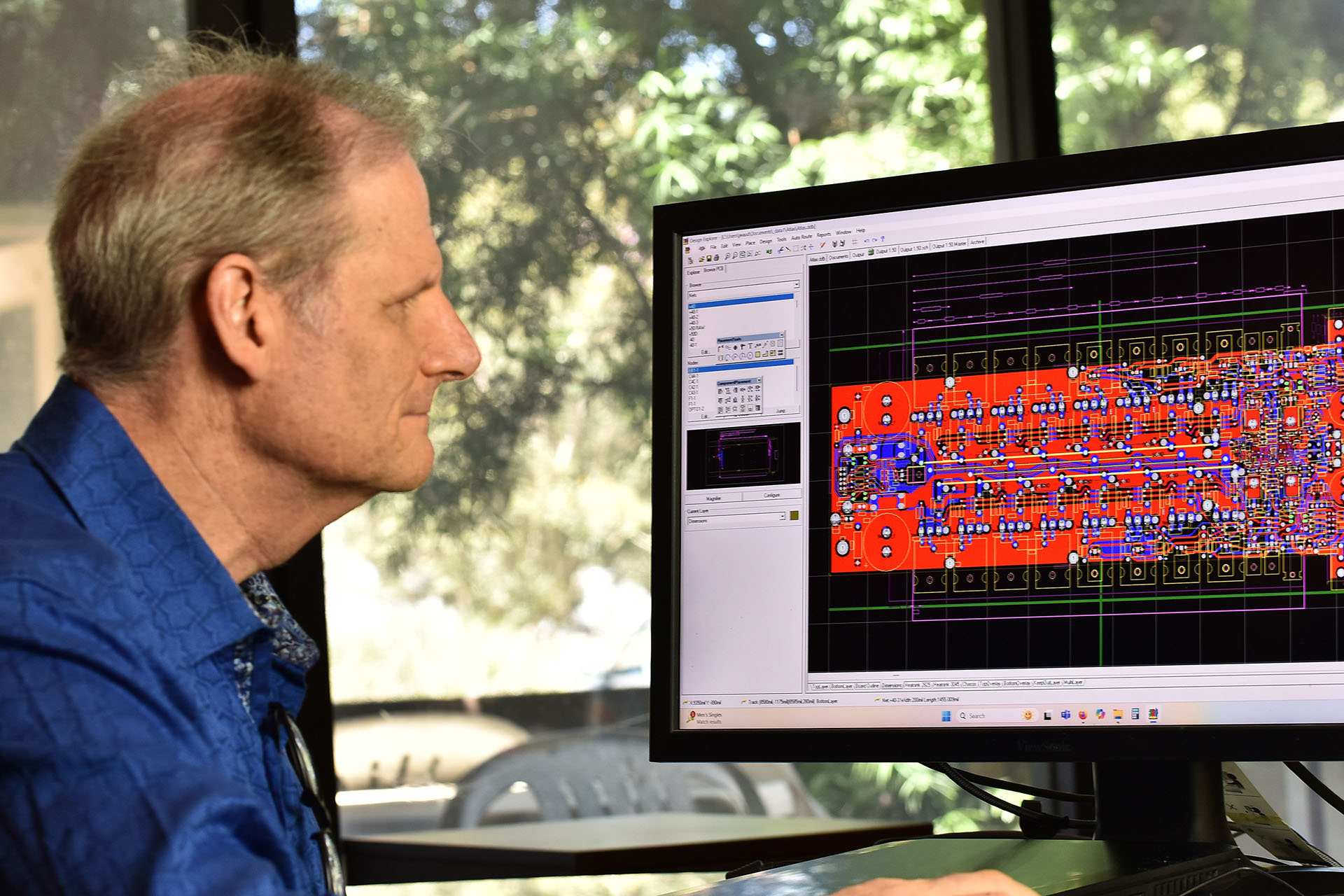
Aesthetix – 30 years of excellence
Aesthetix is a truly high-end audio equipment company known for its innovative, high-quality designs in the audiophile community. The company was founded in the early 1990s by Jim White, a passionate audio engineer and enthusiast. Based in the United States, Aesthetix specializes in manufacturing premium vacuum-tube-based integrated amplifiers, preamplifiers, phono-stage preamplifiers, and digital components. The company’s dedication to craftsmanship, unique circuit designs, and high-quality sound reproduction has earned it a reputable place in the high-end hi-fi market. Its origins are rooted in White’s desire to push the boundaries of audio perfection, starting from a small operation focused on creating tube-based audio equipment with meticulous attention to detail.
We had the chance to listen to our systems with the Aesthetix Mimas integrated amplifier, and you can read an excellent review (“Emotion and Control in Perfect Harmony”) put together by Cosmin & Răzvan Hurba (aka Hurba Brothers). Calypso line preamplifier and Atlas power amplifier, in their Signature and Eclipse editions, also shared our test bench, and a hot review will arrive very soon with an in-depth comparison and extended details of their sound qualities.
I also had the chance to listen to the Aesthetix Rhea Signature all-tube phono-stage in my system for a short time, and I was floored by the beauty, exuberance, and fabulous control in the analog reproduction with a very low-output MC cartridge, which I thought I knew by now inside and out. I could only imagine how fantastic the Eclipse version of this terrific phono preamplifier can perform. It was the best vinyl sound that I had, hands down.
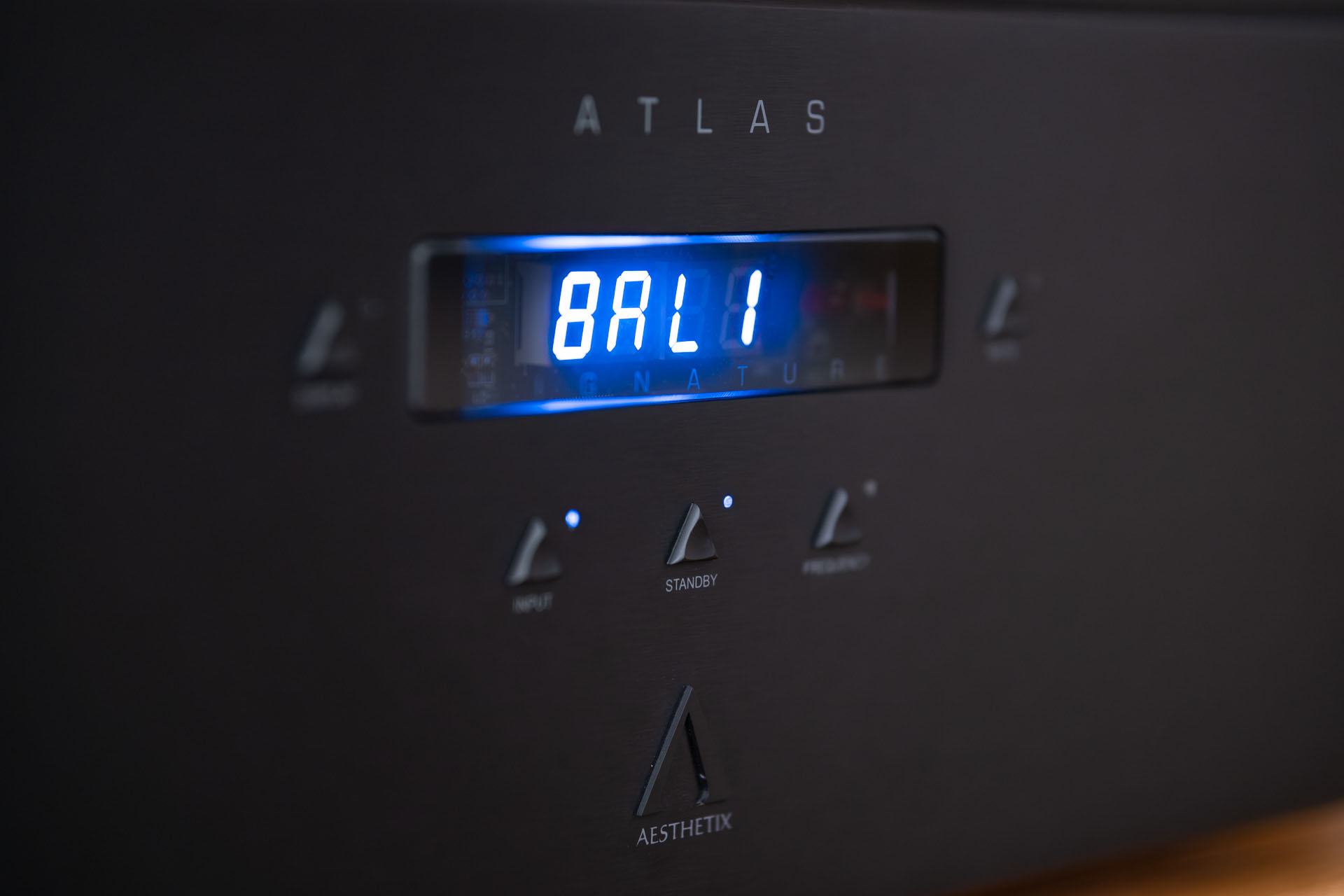
The Interview – Jim White, designer, engineer, and head of Aesthetix
Jim White is the founder of Aesthetix and a highly respected figure in the audiophile community. He is an accomplished audio engineer and designer known for his innovative approach to high-end audio equipment. White’s passion for music and sound quality drove him to develop cutting-edge vacuum tube-based amplifiers and components that emphasize purity, clarity, and musical realism. His deep knowledge of electronic circuitry and his commitment to craftsmanship have been central to Aesthetix’s reputation for producing some of the finest audio gear available. Jim White’s work reflects a dedication to pushing the boundaries of audio technology, with a focus on creating products that deliver an exceptional listening experience.
Here are the answers Jim White generously provided to our questions. We are grateful for the time and attention Jim White put into the detailed response. Thank you!
SoundNews: I’ve learned from reading online that Aesthetics started with the Io phonostage as the first product. As the most reputable and highly successful brands, the first product was an engineering idea brought to life by pure passion. Mr. Jim White, the designer, needed something that was missing: a high-quality phono stage for a very low-output MC cartridge. What ignited this interest in true high-end, cost-no-object phonostage, for which Io stands even now, more than 30 years after its initial creation? How hard is it to design such a noise-free phono stage?
Jim White: The Io phono stage began as a personal project. In the early 1990s, I had acquired a Koetsu Rosewood Signature — a very low-output moving coil cartridge. At the time, digital was rapidly taking over, and much of the turntable / analog world had vanished. There were only a handful of cartridge, turntable, and phono stage manufacturers left, and I found that none of the available phono stages could adequately handle the Koetsu.
This lack of an appropriate phono stage led me to imagine a pure tube phono stage with a lot of gain, more than enough for the Koetsu. My circuit design didn’t follow the conventional audio paradigms of the time; it actually has more in common with the architecture of Tektronix oscilloscopes than with typical high-end audio gear. The first prototype I built was purely for myself; I wasn’t thinking about selling it, let alone starting a company. Coincidentally, I played it for a friend of mine, Jay Nakamura, who was (and still is) deeply devoted to analog. This early prototype wasn’t perfect; incorporating the power supply into the same chassis as the sensitive analog circuitry caused some issues. Regardless, Jay was blown away and convinced me that I should develop it, along with a companion linestage, into commercial products.
Designing a noise-free, pure-tube phono stage capable of amplifying a very low-output moving coil is no small task. It’s a challenge that few companies have attempted, because almost all phono stages, historically and today, rely on hybrid designs or internal/external step-up transformers — approaches I’ve always disliked. But the pursuit of a fully tube-based solution was, for me, the only way to achieve the musical authenticity I was after.
Of course, designing it was just the beginning. Manufacturing and supporting Io for more than thirty years, across dozens of countries, has been far more demanding—and far more rewarding—than I could have ever imagined. At the time, I was brimming with energy and enthusiasm, willing to chase what some considered a “crazy” idea. Looking back, I’m grateful that I did, because Io represents not just an engineering solution, but the joy, passion, and obsession that first inspired me to build it.
SoundNews: What changed over these 30 years for this statement product? Is it the same circuit? Are the components used still available? How has this extraordinary product evolved?
Jim White: Over the past three decades, the fundamental design of the Io has remained unchanged. The core circuit is the same as when I first built it. What has evolved are the details—the components, the execution, and the options we now offer. Over the years, we’ve refined the product and created upgraded editions, such as the Signature and Eclipse. These versions enable customers to choose the level of performance and finish that best suits their needs.
We’ve continually upgraded materials and internal components as better options became available. Most recently, for example, we introduced new transformers with internal shielding and a specialized isolation mounting system. These have brought significant improvements, and the response from long-time Io owners, who have had their phono stages upgraded, has been especially gratifying. We’ve also enhanced the casework, particularly in the Eclipse edition, bringing the same attention to mechanical integrity and aesthetic detail as we give to the circuitry itself.
So while the Io today is recognizably the same product at its heart, it has matured gracefully, benefiting from decades of incremental refinements. It’s still the reference I envisioned at the start, but more fully realized in every aspect of design, execution, and musical performance.
SoundNews: Why tubes? What are the benefits of tubes, especially in such very low current applications like a phono stage or a line preamplifier? What is the advantage of using the tubes in the first stage of the power amplifier?
Jim White: Why tubes? Let’s begin with the reverse question — why not tubes? They are, after all, less efficient, require high voltage, generate heat, wear out over time, and must be carefully tested, graded, and matched (although many transistor designs also require some of this). On the surface, there are many reasons not to choose them. And yet, there is one compelling reason that overrides all the others: sound quality. In the right conditions — with a proper power supply and carefully executed circuit design— tubes create a musical presentation that is more lifelike, more immediate, and more emotionally involving than any other amplifying technology I’ve encountered. They have an uncanny ability to convey the sense of “being there” with the performance.
We are, of course, also well-versed in solid-state design. We’ve employed solid-state technology across many of our products for decades and have been building hybrid power amplifiers for over twenty years. We understand the strengths of both approaches. However, when it comes to small-signal voltage amplification, tubes achieve what I set out for Aesthetix to represent: the most authentic and musically engaging experience possible.
This is why, in the Atlas power amplifier, we place the tubes at the heart of the voltage-gain stage. It enables us to capture that natural tube magic while using bipolar transistors for the current-gain stage. The result is the best of both worlds: the musical immediacy and involvement of tubes, coupled with the control, stability, and consistency of solid state—qualities essential for driving a wide variety of speakers.
SoundNews: Aesthetix started in the pure analog domain and still excels today in this. What is your take on digital now, and are you surprised by the fierce comeback of vinyl and pure analog sound these days?
Jim White: Digital today is unquestionably better than it has ever been. The accessibility of high-bit-rate/sample-rate recordings, combined with the remarkable advances in DAC technology from IC manufacturers, has elevated digital playback to a level that would have been unimaginable just a couple of decades ago.
We definitely live in a magical time — never before has so much music been available to so many people, and in such high-quality formats. That said, when I sit down to listen, it’s almost always with analog. Vinyl has a way of drawing me in, engaging me emotionally, and making me feel a part of the performance in a way nothing else quite does. However, I am also perfectly happy with streaming digital music at home.
As for the resurgence of vinyl, I can’t say I’m surprised it returned, but I am surprised at how FAR analog has come back. The sheer scale is amazing. I often encounter young people with turntables and a joy for record shopping. As an industry (high-end audio), we should point to this as something we created, and it should fill us with optimism.
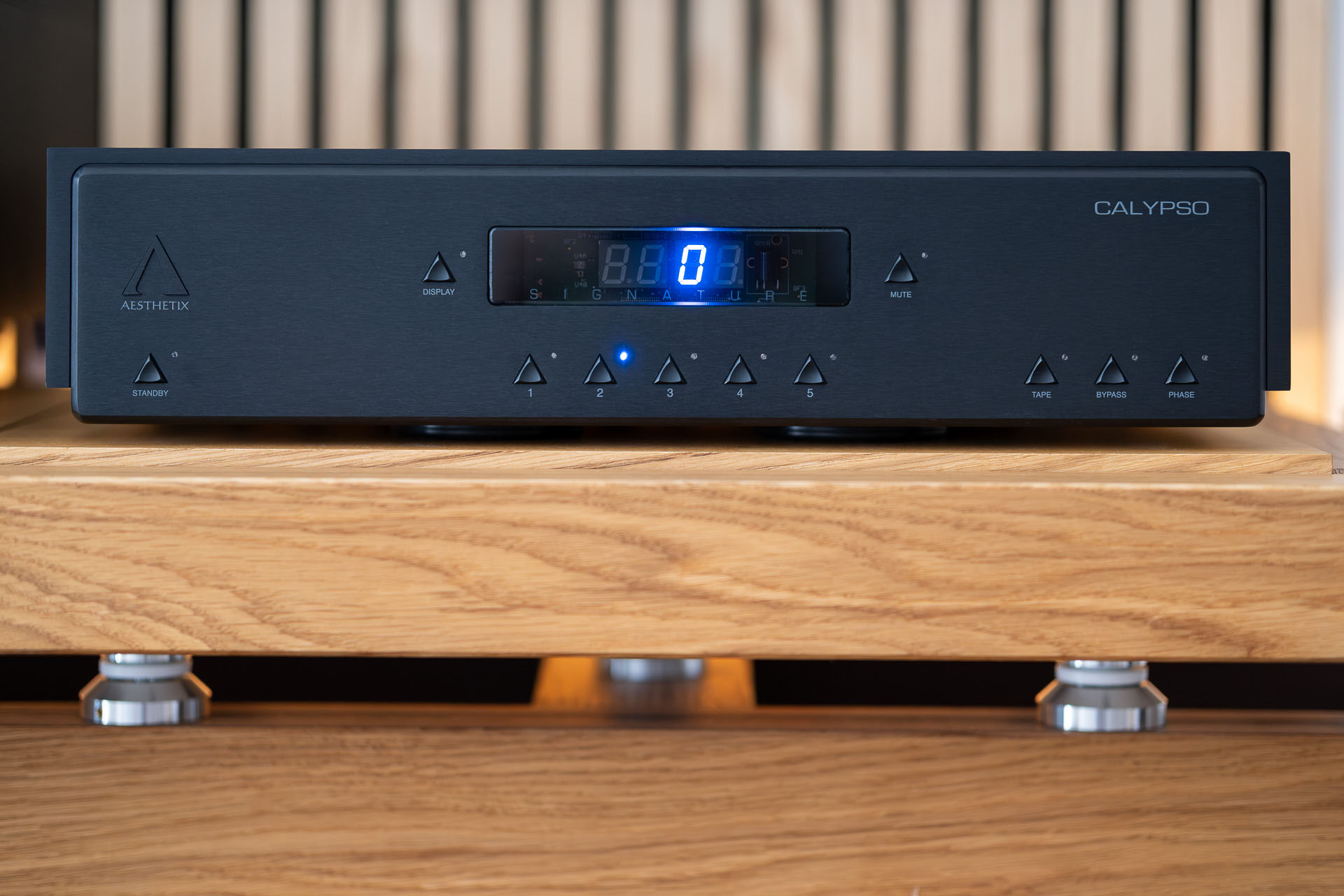
SoundNews: Is there an Aesthetix sound characteristic that you always search for? Many manufacturers claim to have no sound pattern and complete transparency, but this is not true. In our experience, everything has a sound, and we liked many qualities of Aesthetix sound patterns.
Jim White: If there is one sound characteristic I’m always searching for in an Aesthetix design, it’s realism — the sense that the music is happening in the room, not just coming out of speakers. As humans, when we are walking down the street, we can almost always distinguish between reproduced and live music, even if it is blocks away. That distinction isn’t about frequency response, loudness, or bass — it’s something more subtle, and it has stayed with me throughout my life.
The conclusion I’ve reached, rightly or wrongly, is that it’s dynamics which give us the biggest clues. And by dynamics, I don’t just mean the difference between the softest and loudest passages. Even with instruments that are relatively “undynamic,” like a clarinet horn, there are micro-dynamic cues — tiny fluctuations in timing, articulation, and expression — that reveal whether the sound is real or reproduced. It’s incredibly difficult to capture those nuances in an audio component; every aspect of the design has to be perfect: circuit topology, component selection, and layout all play their part.
For me, however, the most critical factor is the power supply. Every ounce of effort invested in the power supply is directly audible in the quality of the dynamics, the kind that bridges the gap between realism and “reproduction.” This is why we go to such extraordinary lengths when designing the power section of our products, including building our own transformers and chokes in-house.
Every Aesthetix product is heavy. A significant portion of that weight is due to their extensive power supplies. Take the Atlas, for example: it features two transformers, three chokes, multiple secondary windings, and several stages of regulation. The Calypso line stage, although smaller, still has two transformers and a choke. Each of these elements is intentionally designed to ensure the power supplied to the circuit is as clean, stable, and dynamic as possible, ultimately allowing our products to recreate the microdynamics that make the music feel alive.
SoundNews: Listening to Caypso Eclipse now paired with Atlas, we have a few questions about the tubes used. First, the tubes will be labeled Left and Right. Is this for convenience, or is the circuit tuned to match the specific tube characteristic (left apart from the right channel)? And if so, what shall be considered if one wants to change the tubes (beyond tube pairing)? Additionally, the choice of tube is primarily based on availability, consistency, and sound quality. What is the rationale for the tube used beyond quality and consistency? Are there any upgrades, holy-grail tubes, or current-production items you could recommend? It is such a pain and high expense to search, try, and fail with different tubes that any hint will be so much appreciated:) We learned the hard way that very conscious manufacturers actually stand by the tubes used, regardless of price, and sometimes we do not get the expected benefits from some highly praised NOS…
Jim White: The left and right channels in most of our products are identical, meaning the same circuit board is used for both, effectively creating a dual mono setup, except for the power supply. Some products, such as Io and Callisto, can be upgraded to pure dual mono (including power supply) by replacing the shared power supply with individual separate power supplies for each channel.
When it comes to tubes, the labeling of left and right is primarily for convenience. Tubes are generally matched within 0.2 dB, and often 0.1 dB, for each location. This means it doesn’t actually matter if a tube intended for the left channel is installed in the right channel (or vice versa) in the same position.
As you noted, we select tubes for quality and consistency. We buy thousands of tubes, burn them in, and test them in an unorthodox manner. We do not use a standard tube tester; instead, we use an Audio Precision analyzer. This allows us to “see into” parameters that a traditional tube tester cannot. We get more than just a value for the tube’s noise floor, we also get its full spectrum. For each location in our products, we have specific requirements for this noise and spectrum. Another example is distortion. We measure tubes not just for THD %, but also examine each harmonic. Again, specific locations have tight requirements for these distortion components. Tubes purchased from us are designated for specific products and tube locations for these very reasons. It is a painstaking process, and many of the tubes we purchase do not meet the requirements for our products.
When it comes to NOS tubes, they were generally manufactured to higher standards than today, largely because they were critical to communications and industrial infrastructure. While some audiophiles enjoy chasing rare or exotic NOS tubes, our goal is to carefully select and test modern tubes to deliver consistent, high-quality performance.
SoundNews: Are these circuit design decisions fundamental for how Aesthetix sounds (fully class A for preamplifiers, fully balanced even if the phono input is not)? Does this matter for the design philosophy?
Jim White: Yes, absolutely. The sound of Aesthetix is the result of every design decision we make, large or small. Even things that might seem insignificant — a resistor type, a layout choice, a grounding point — can have a surprisingly large effect on performance. One of our favorite sayings, “The devil is in the details,” truly applies to our engineering philosophy; nothing is too small to matter.
When a source isn’t balanced, like a single-ended phono input, we convert the signal to balanced internally. This enables us to reap the benefits of a balanced signal path, removing extraneous noise from the music signal.
We make deliberate, often demanding design choices, but they’re what make an Aesthetix component sound the way it does—naturally transparent and deeply engaging.
SoundNews: What does the no global feedback philosophy, which we appreciate so much, add to the sound characteristics? If one can change tubes, this could alter the sound’s flavor, sometimes significantly altering the voicing more than in a high-feedback design. Is there a voicing around the specifics of tubes used? If so, are there any recommendations to maintain consistency and the intended sound quality?
Jim White: In my experience, a zero–global feedback design offers a realism and naturalness that feedback-based designs simply don’t achieve. Some of this character may not come from the absence of feedback itself, but from what the lack of feedback requires. When feedback is applied, many circuit imperfections — device mismatches, looser tolerances, and other irregularities — are masked or “corrected.” This allows manufacturers to use components that might not be ideal on their own. In contrast, when you design without global feedback, none of those errors are hidden. Every device, every tolerance, every layout choice matters. It demands extremely tight component matching, careful selection, and labor-intensive measures. The process is more difficult and costly, but the sonic payoff: greater immediacy, transparency, and a truer sense of musical realism is, in my opinion, worth it.
As for “voicing,” I’ve always avoided designing products around a specific tube type or listening setup. I don’t try to tailor the sound to a particular flavor. My goal is that our components will perform exceptionally well in ANY system, with tubes that are appropriately tested, graded, and matched.
SoundNews: In our Mimas review, we noticed how much of the DNA came directly from Calypso. For the upcoming Atlas/Calypso review, can you help us understand the differences between Calypso operating standalone, with its own dedicated PSU and chassis isolation, and when its topology is integrated into Mimas?
Jim White: My design goal for Mimas was to incorporate as much of Calypso and Atlas as possible into an elegantly integrated product. Utilizing Calypso‘s voltage gain section is a crucial component of the design. We changed the gain tubes from 12AX7s to 6DJ8/6922s, which lowered the impedance and reduced the circuit’s susceptibility to electromagnetic fields created by the larger transformer. We also opted to use surface-mount thin-film resistors in Mimas. This was partly a cost-saving decision, but partly a practical one for compactness and manufacturing efficiency.
Calypso features a 6922 tube output buffer, providing drive capability and isolation when used as a standalone line stage. Mimas doesn’t need that section, because its gain circuitry couples directly to its power output stage.
Another critical area is the power supply. In Calypso, the high-voltage supply feeding the gain stage uses a choke-input design with discrete regulation — a complex and refined approach that brings additional transparency and dynamic capability. In Mimas, the power supply is a capacitor-input design, still discretely regulated, but with a simplified circuit more appropriate for an integrated amplifier.
The result is that Calypso, operating independently with its own dedicated chassis, isolation, and choke input power supply, achieves a higher degree of refinement and resolution. Mimas, on the other hand, distills much of that lineage into a more compact and affordable package, while still retaining the engaging musicality that defines Aesthetix.
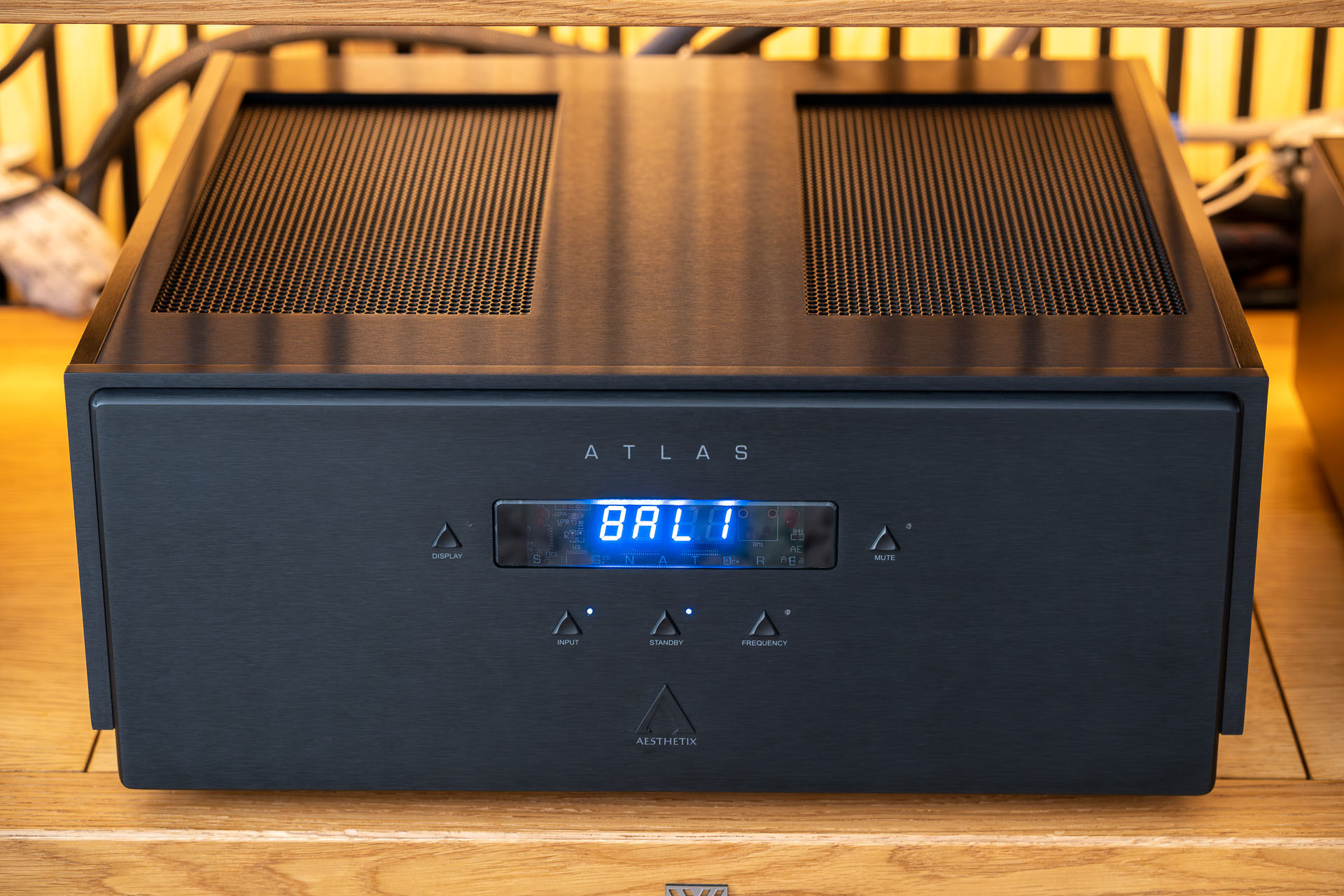
SoundNews: Without global feedback, bias drift and thermal tracking are critical. How do you design the bias network to remain stable across hours of playback and high current swing? Do you use thermal coupling of sensing devices to output transistors, or is it all passive resistor/diode tracking?
Jim White: The bias circuit in any amplifier is absolutely critical, not only for measured and sonic performance, but also for long-term reliability and product longevity. A great deal of effort went into designing the bias networks of Atlas, Mimas, and Dione for precisely these reasons. We employ diodes and thermally coupled active devices to provide precise thermal compensation, ensuring that the amplifier maintains proper bias and prevents drift over time and under demanding operating conditions.
SoundNews: Calypso and Atlas are both dual-mono at heart, but what is your actual grounding approach? Do you implement true star grounding, distributed ground planes, or a hybrid approach? How do you prevent ground-borne noise when running such large transformers in proximity to small-signal tubes? What is the difference between Signature and Eclipse?
Jim White: Grounding is one of those areas that seems simple on paper, but in practice, it requires a tremendous amount of time and effort during design and manufacturing. It has a profound impact not only on measured performance but also on the musical qualities of a component.
With products like Calypso and Atlas, where multiple large transformers each have several secondary windings, the interaction of ground currents becomes a critical design consideration. I generally use distributed ground planes in Aesthetix products, and in some situations, I also employ star-grounding techniques for specific purposes.
Transformers, regardless of size or design, generate stray magnetic fields that induce eddy and ground currents, an effect that becomes more pronounced when components share a common chassis. Eliminating these can be especially challenging. In our Standard and Signature Edition products, we use specific methods for mounting the transformers, which help mitigate these currents.
Moving to the Eclipse Edition, we go even further, completely decoupling the transformers and chokes from the chassis using specially designed isolation mounts. We also install separate ground wires from the transformer cases to select locations, providing us with even finer control over those currents.
SoundNews: The Mimas uses a 900 VA low-flux transformer wound in-house. Could you detail what makes your transformer design different from a conventional toroidal? For example, do you optimize for leakage inductance, stray field reduction, or thermal behavior, and how does that directly affect sonics in both Mimas and Atlas? Do you voice transformers sonically, or strictly by electrical measurements?
Jim White: At Aesthetix, we use EI-core transformers exclusively. While toroids certainly have some nice qualities—lower stray fields and higher efficiency among them — I feel their negatives outweigh those advantages in high-end audio applications. One of the key issues with toroids is the lack of an air gap in their core, which makes them highly susceptible to even small amounts of DC on the incoming power line. In today’s environment, switching power supplies are everywhere in a household, injecting noise into the power lines that travel throughout the house. This presents a particular challenge for toroidal transformers, which are prone to saturation when DC is present—robbing the music of dynamic impact and imparting an unnatural hardness or glare in the upper frequencies.
EI transformers, by contrast, inherently include a gap, which makes them far more resistant to DC saturation. They are also less efficient at coupling line noise into the secondary windings—ironically, a “deficiency” that becomes a virtue in audio. In today’s noisy electrical world, these qualities are invaluable for maintaining a quiet, stable foundation for amplification.
When I design transformers, my goal is to minimize stray fields while meeting regulation and thermal requirements, and doing so in a way that is practical from a cost and manufacturability standpoint. I follow a set of general design principles that, in my experience, consistently yield the best sonic results. Because we design and wind our transformers in-house, we maintain complete control over both the materials and process. This is a significant advantage, not just in terms of measurements, but in the way it directly translates to greater transparency, dynamics, and musical involvement in all of our products.
SoundNews: How are you voicing the products? How are you listening? What is the process from the design to actually end up with a product of the same sound signature but better?
Jim White: For me, the design process always begins conceptually, almost entirely in my head. Before I ever draw a schematic, I need to be able to “see” the product as a whole—where the gain stages are, the output sections, the layout of the power supplies, etc. If I can’t visualize that clearly, I don’t move forward, because in my experience, without that clarity, the process becomes frustrating and ultimately fruitless. While details may evolve during the engineering process, the fundamental structure rarely changes from what I first envisioned.
From that point, my focus shifts to getting a prototype up and running, then identifying the technical and sonic problem areas. The initial prototype inevitably reveals challenges, which leads to a second version that narrows down the problem areas. It’s common for me to go through four to six prototypes before arriving at a production prototype that I feel confident sending to dealers and distributors for evaluation. Once the major technical issues are resolved, I turn my attention to listening.
I will begin listening in my own systems, often along with my son Ozzy, our Production Manager. He has exceptionally good ears and plays a critical role in this phase.
Together, we make refinements using my “bag of tricks”, which most designers have, that allow us to tailor the sound, usually with small component changes. Once we’re satisfied that the design is meeting my objectives in my own systems, I take it further, bringing or shipping prototypes to trusted friends, listening in their environments, and gathering feedback.
Our ultimate goal is to produce a product that consistently performs at the highest level across a wide range of systems, musical styles, and listener preferences, delivering the sense of involvement expected from an Aesthetix component.
SoundNews: Can you tell us something new, something about next in line, some hints for the feature?
Jim White: Looking to the future, I still see endless possibilities. But one thing hasn’t changed in 30 years: I only build products I feel truly passionate about. I’ve never been interested in chasing trends or making something just because it might sell. For me, a design has to mean something personally and bring real value to the world of high-end audio.
Our Metis preamplifier is a good example of that philosophy. It’s fully DC-coupled — something I had never seen before in a tube preamp. That approach gives it the warmth and richness of tubes, along with the speed and extension of solid state. It’s the best of both worlds, and I’m excited to see this technology find its way into future products. Aesthetix has always been about passion and longevity, which is why every product we’ve ever made is still in production. That consistency has built a lot of trust with music lovers around the world. And now, with my son Ozzy leading production, I know those same values will carry forward far into the future. His dedication and respect for both music and craftsmanship give me confidence that Aesthetix will continue to grow and inspire the next generation of listeners.
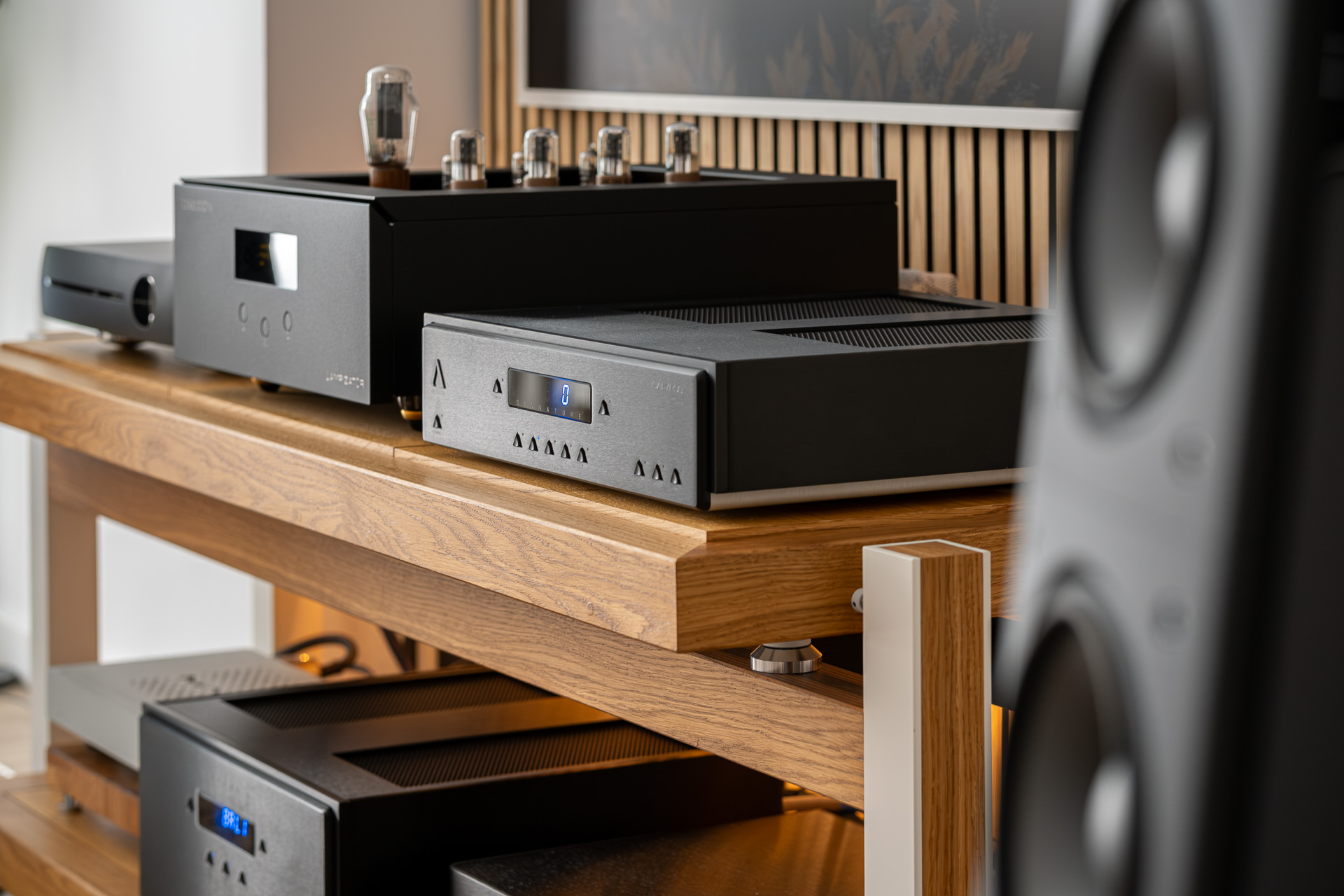
Closing Words
I want to thank again our friend, adviser, and specialist at AV Store, Lucian Velea, for making all this possible. My gratitude for the highly detailed answers to Mr. Jim White, with the hope that we can meet in person someday. And thank you all for following us here and sharing the experience along the road. Let’s hear only the best!

